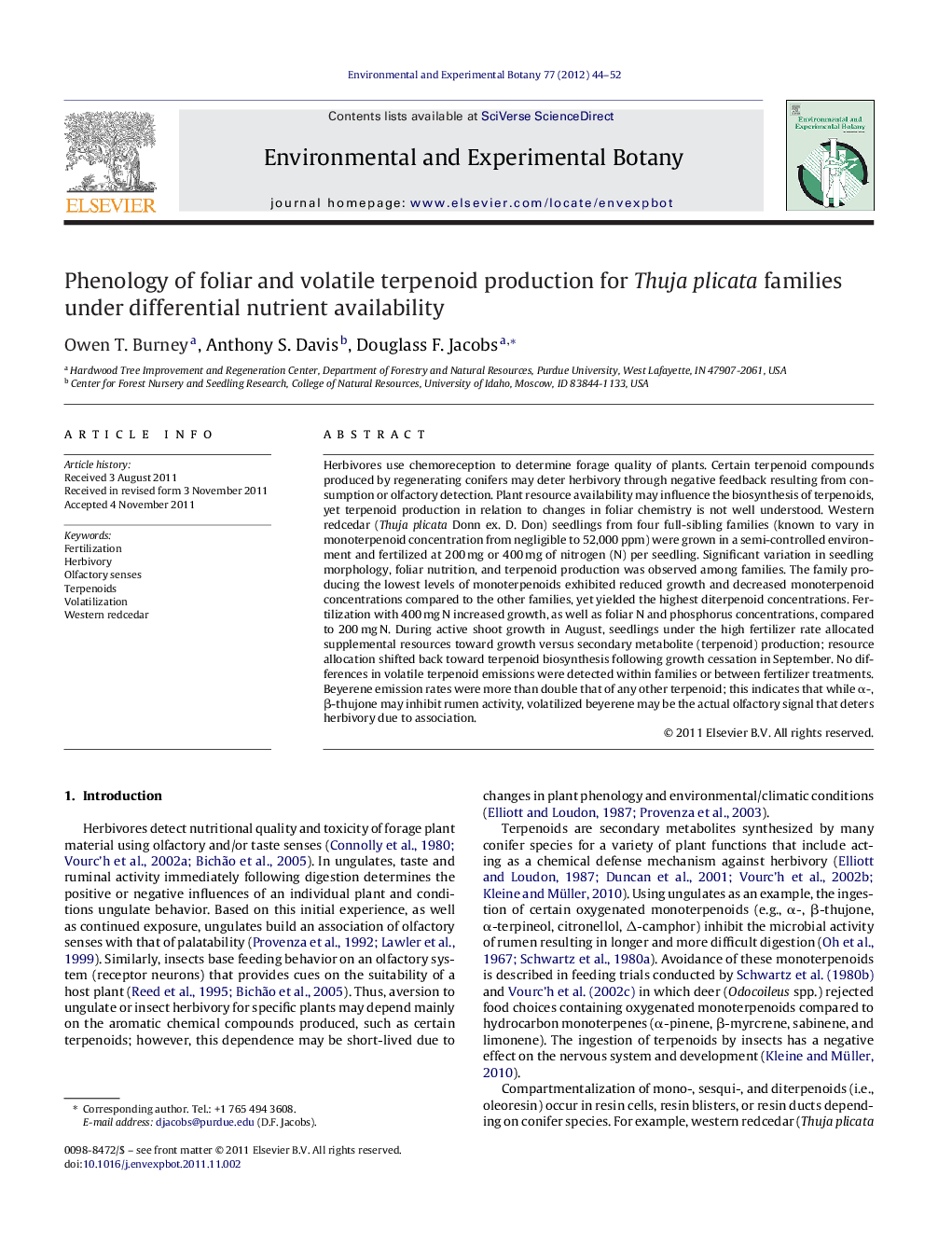| کد مقاله | کد نشریه | سال انتشار | مقاله انگلیسی | نسخه تمام متن |
|---|---|---|---|---|
| 4554668 | 1628100 | 2012 | 9 صفحه PDF | دانلود رایگان |

Herbivores use chemoreception to determine forage quality of plants. Certain terpenoid compounds produced by regenerating conifers may deter herbivory through negative feedback resulting from consumption or olfactory detection. Plant resource availability may influence the biosynthesis of terpenoids, yet terpenoid production in relation to changes in foliar chemistry is not well understood. Western redcedar (Thuja plicata Donn ex. D. Don) seedlings from four full-sibling families (known to vary in monoterpenoid concentration from negligible to 52,000 ppm) were grown in a semi-controlled environment and fertilized at 200 mg or 400 mg of nitrogen (N) per seedling. Significant variation in seedling morphology, foliar nutrition, and terpenoid production was observed among families. The family producing the lowest levels of monoterpenoids exhibited reduced growth and decreased monoterpenoid concentrations compared to the other families, yet yielded the highest diterpenoid concentrations. Fertilization with 400 mg N increased growth, as well as foliar N and phosphorus concentrations, compared to 200 mg N. During active shoot growth in August, seedlings under the high fertilizer rate allocated supplemental resources toward growth versus secondary metabolite (terpenoid) production; resource allocation shifted back toward terpenoid biosynthesis following growth cessation in September. No differences in volatile terpenoid emissions were detected within families or between fertilizer treatments. Beyerene emission rates were more than double that of any other terpenoid; this indicates that while α-, β-thujone may inhibit rumen activity, volatilized beyerene may be the actual olfactory signal that deters herbivory due to association.
► We examined foliar and volatilized terpenoids of western redcedar seedlings.
► Seedling morphology, foliar nutrition, and terpene production varied among families.
► Volatile terpene emission did not differ among families or fertilizer rates.
► Beyerene emission rates were more than double that of any other terpene.
► Volatilized beyerene may be the olfactory signal that deters ungulate browse.
Journal: Environmental and Experimental Botany - Volume 77, April 2012, Pages 44–52